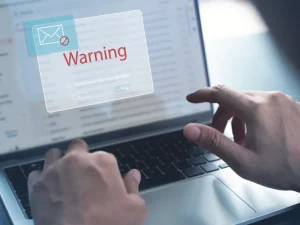Education today extends far beyond textbooks and chalkboards. From cloud-based learning platforms to virtual classrooms, schools and universities are powered by technology. Students submit assignments online, teachers manage grades digitally, and administrators store sensitive records in the cloud.
But with this transformation comes vulnerability. As education systems open their digital doors to innovation, they also expose themselves to cyber risks. Cybersecurity in education is now essential to protect learning environments from disruption, data breaches, and digital manipulation.
Why Hackers Target Schools and Universities
You might not expect a school to be a prime cyber target, but it is. Educational institutions store massive amounts of valuable data: student records, personal identification details, financial aid information, and even research assets.
Attackers know that schools often operate with limited IT budgets and outdated infrastructure. That combination makes it easy to prey on ransomware, phishing, and social engineering attacks. In many cases, hackers assume schools will pay quickly to restore systems critical to teaching and exams. As a result, the education sector has quietly become one of the most targeted industries in recent years.
When Cyberattacks Disrupt Learning
Cyber incidents in education not only affect servers but also affect students’ futures. When systems go down, classes are canceled, grades go missing, and exams are delayed. The consequences extend beyond inconvenience; they can affect academic progress, admissions, and institutional reputation. Here’s what typically happens when a breach hits a school network:
- Online learning platforms have become inaccessible.
- Student and staff records are exposed or stolen.
- Communication between teachers and students is interrupted.
- Administrative operations grind to a halt.
Building a Secure Learning Environment
Protecting education from cyber threats requires more than just firewalls. It demands a proactive, multi-layered approach that addresses technology, people, and processes together. That means schools and universities should focus on:
- Regularly updating and patching systems and learning platforms.
- Implementing strong identity and access controls for staff and students.
- Conducting cybersecurity awareness training across campuses.
- Encrypting sensitive student data both in storage and in transit.
- Backing up critical systems to prevent ransomware disruption.
Teaching Cyber Awareness as a Life Skill
The classroom is not only a place to learn math or literature, but also where digital habits are formed. By embedding cybersecurity awareness into the curriculum, schools can shape a generation that understands how to protect itself online.
Simple lessons on password hygiene, phishing awareness, and data privacy can go a long way. For universities, teaching cybersecurity principles across disciplines, not just computer science, prepares graduates to navigate the modern workforce responsibly. Cybersecurity in education is not only about securing networks. It is about building informed, resilient digital citizens.
The Future of Safe Learning
As hybrid learning and EdTech continue to expand, cybersecurity must be treated as a core part of educational infrastructure. It’s what keeps innovation sustainable, classrooms connected, and knowledge safe. Education empowers the future, and that the future must be protected from digital harm.
At Terrabyte, we help schools, universities, and learning institutions strengthen their digital environments, from protecting student data to securing online learning platforms. Because in education, cybersecurity is not just about safety but about preserving the freedom to learn.



